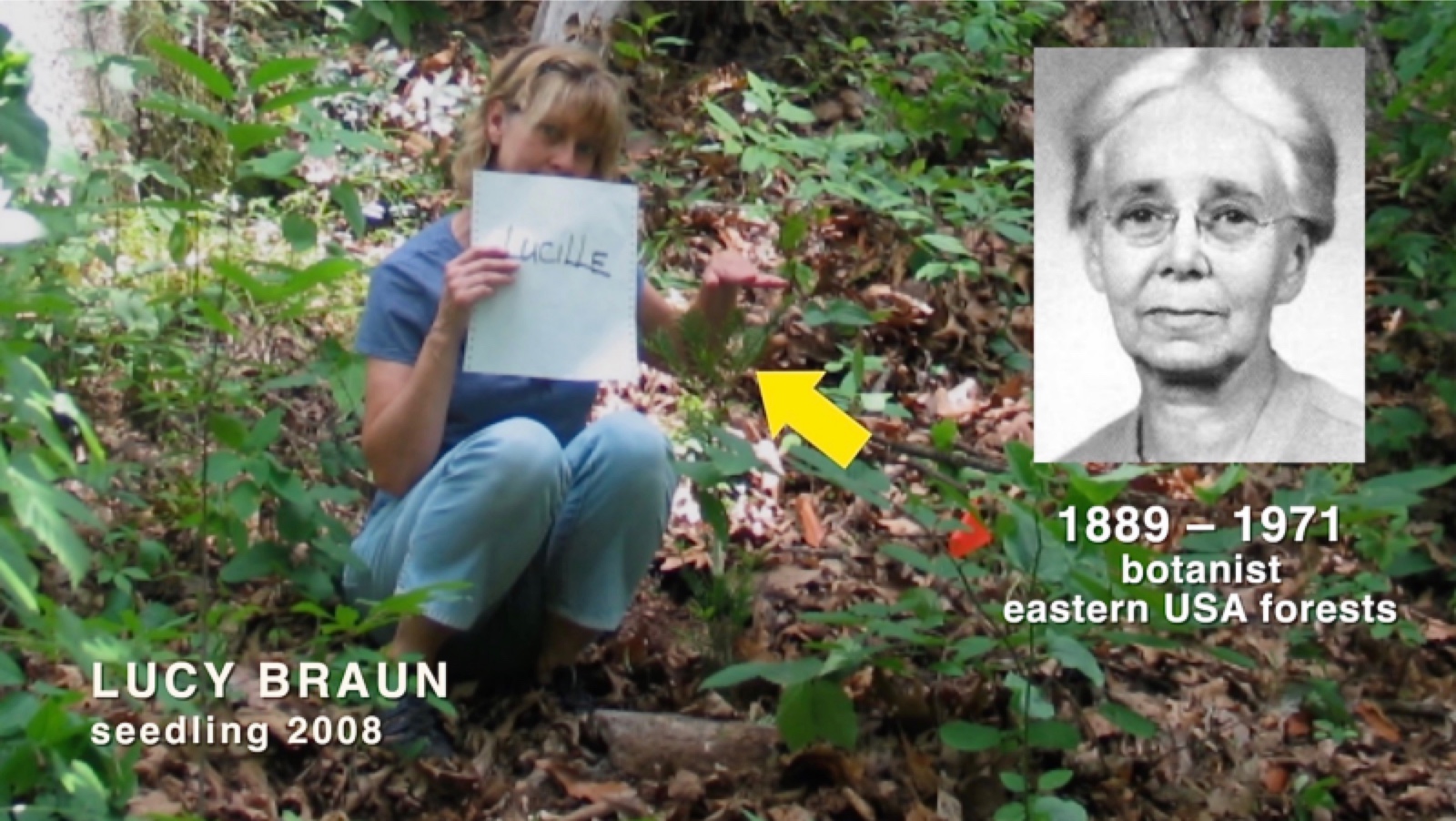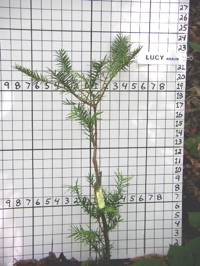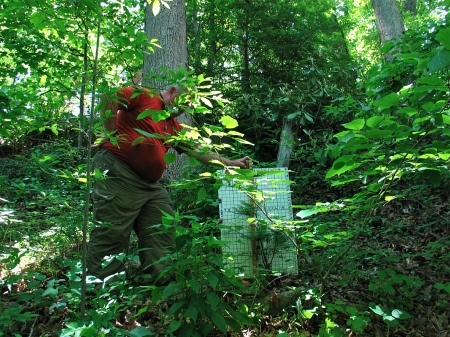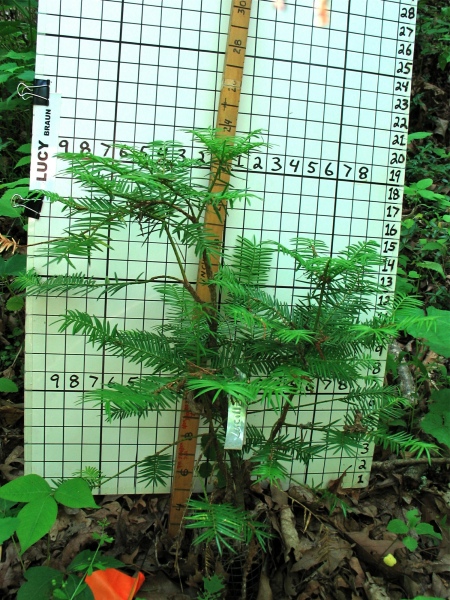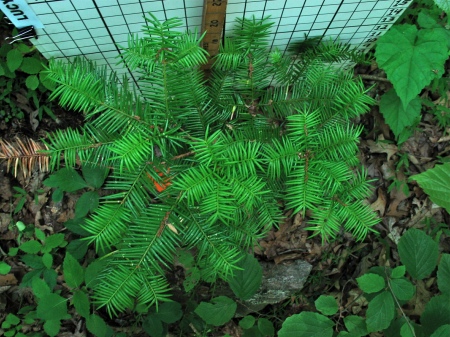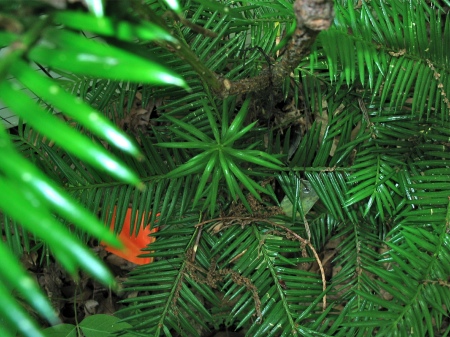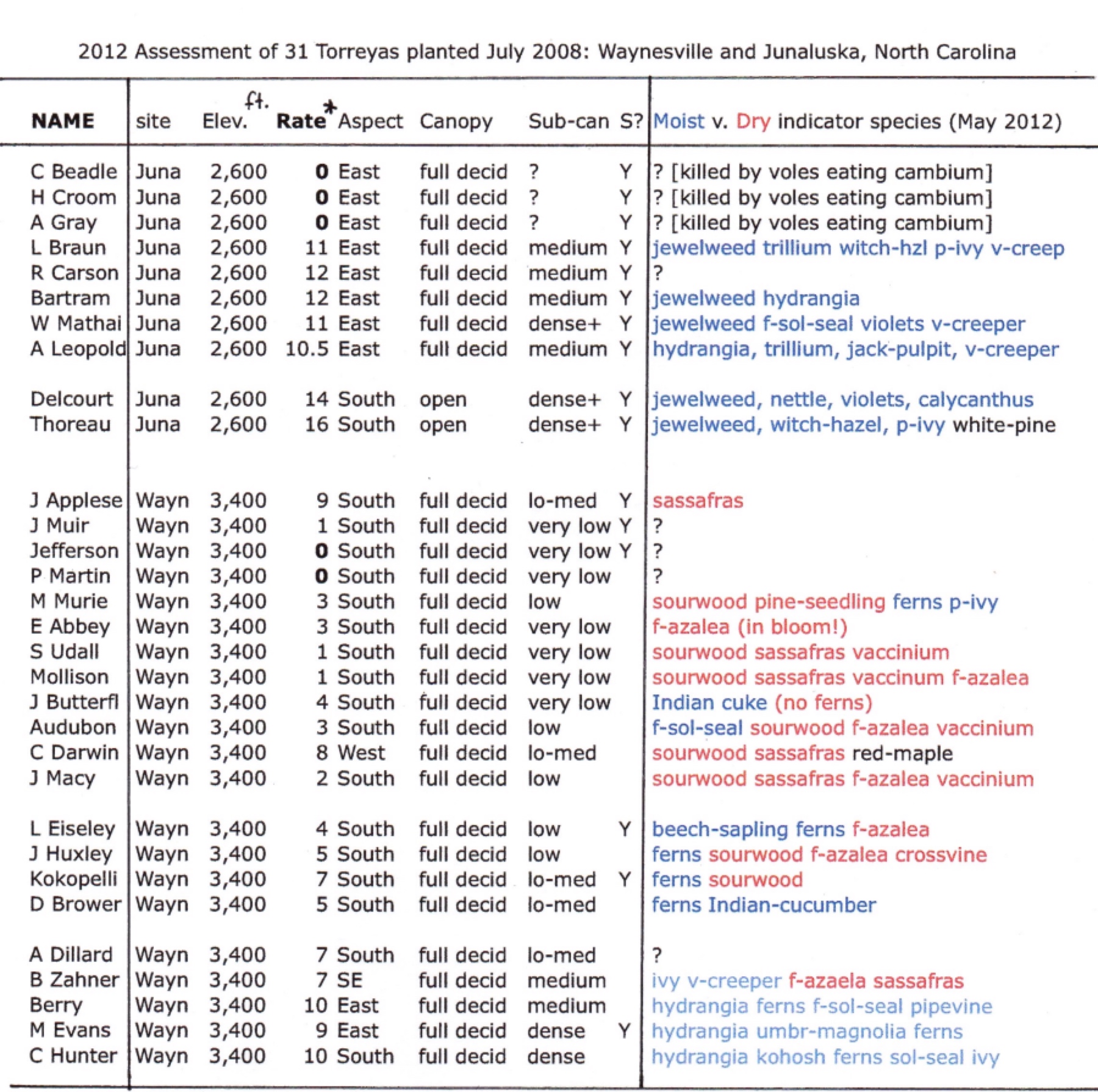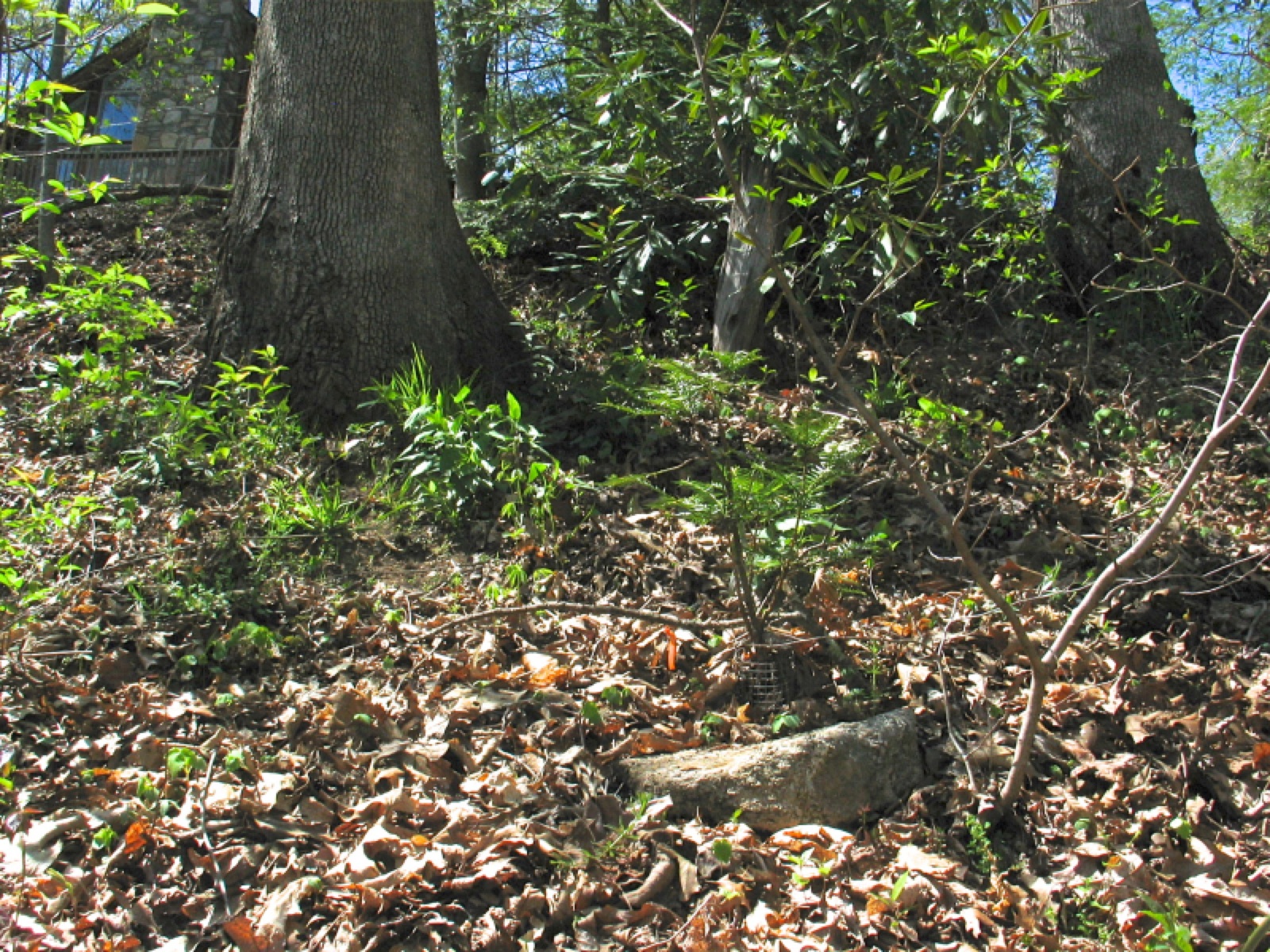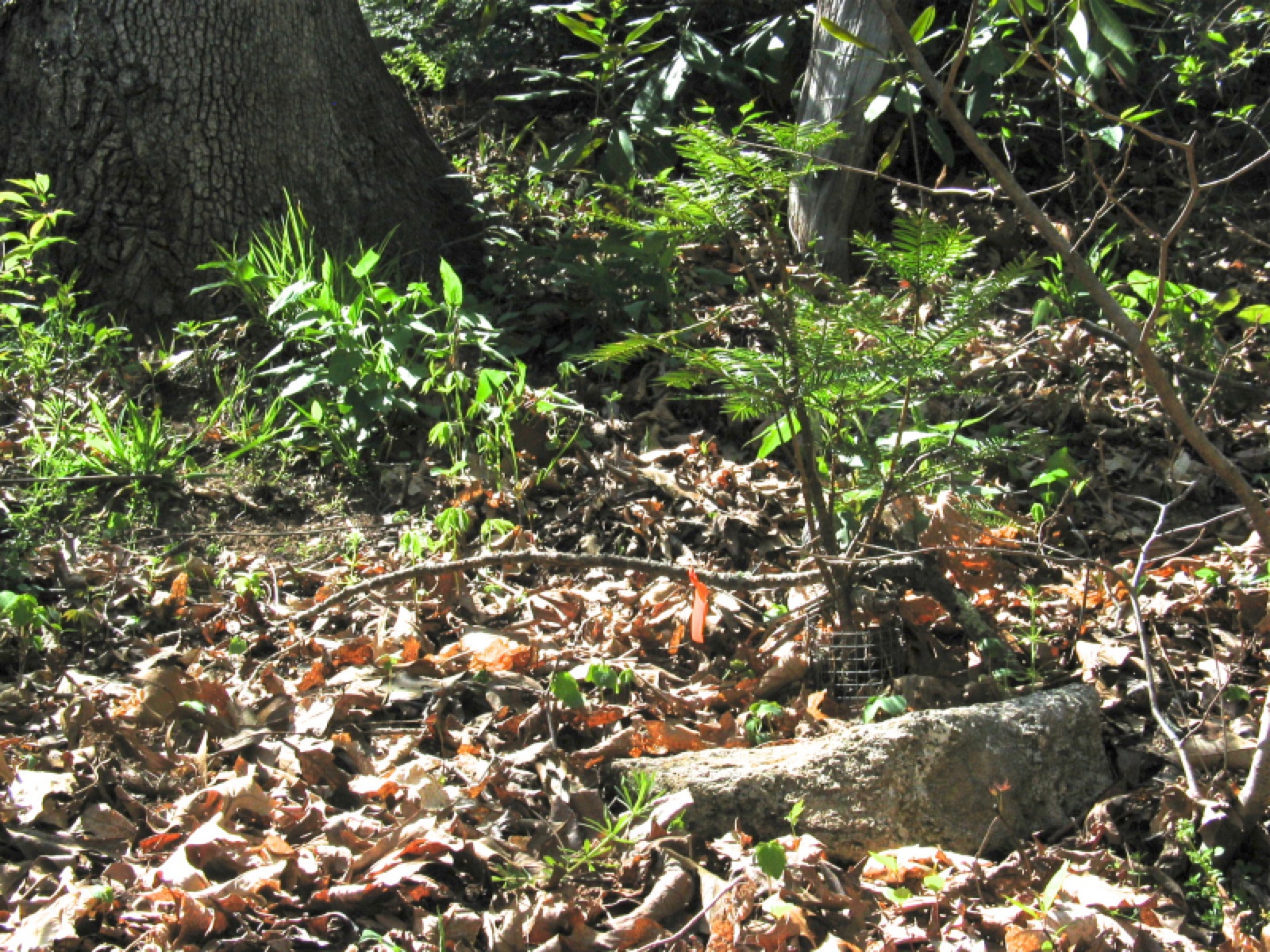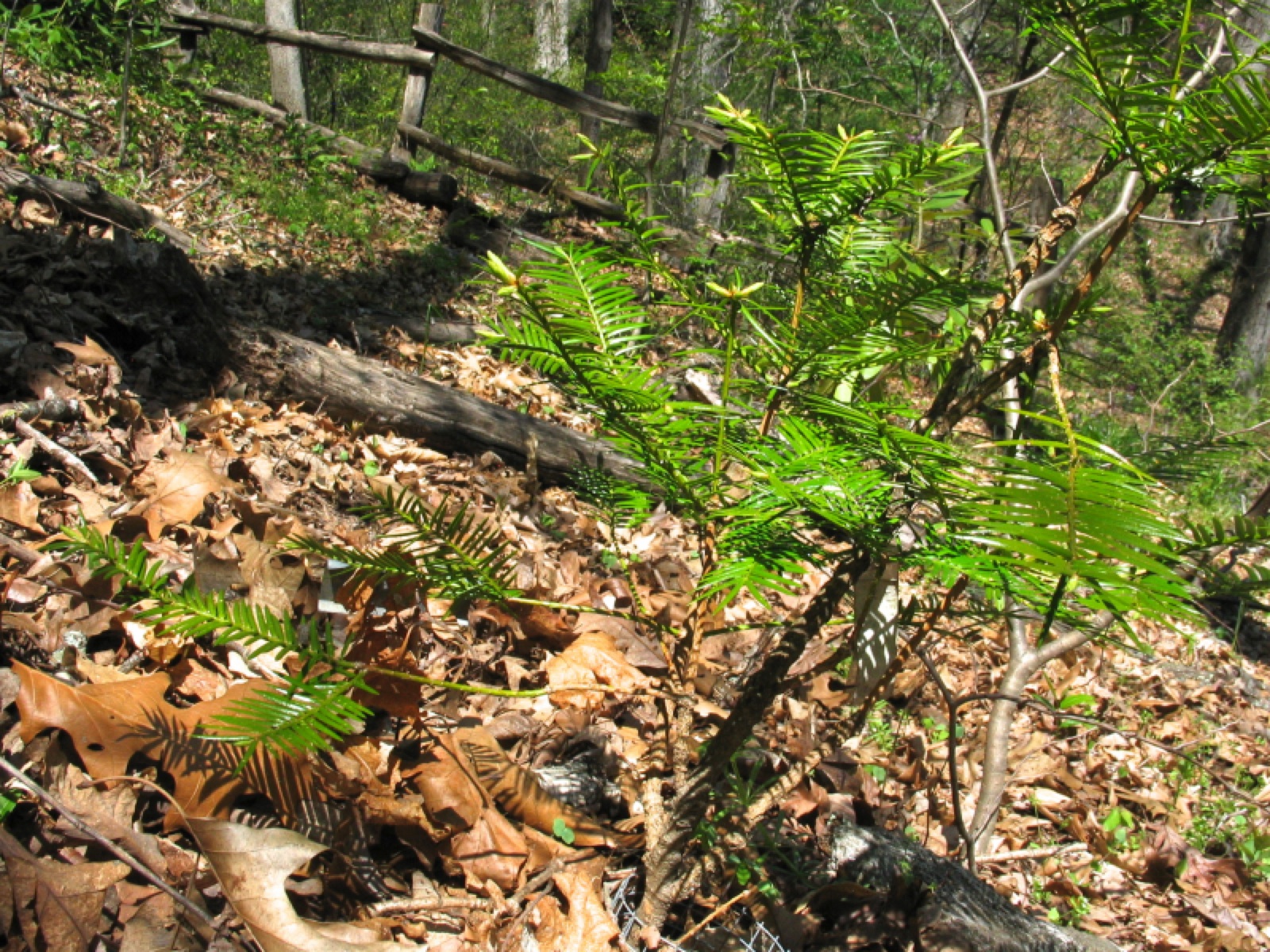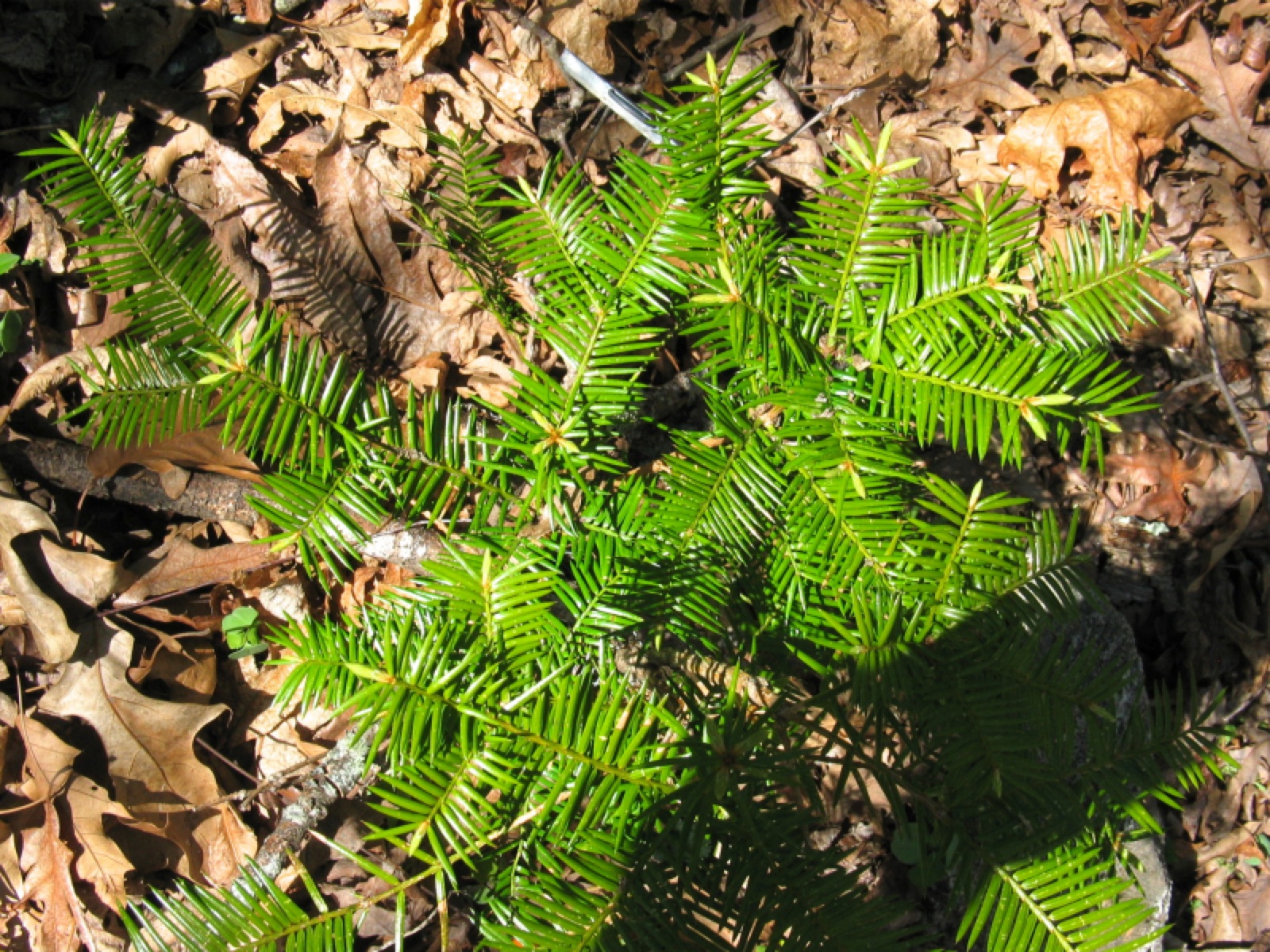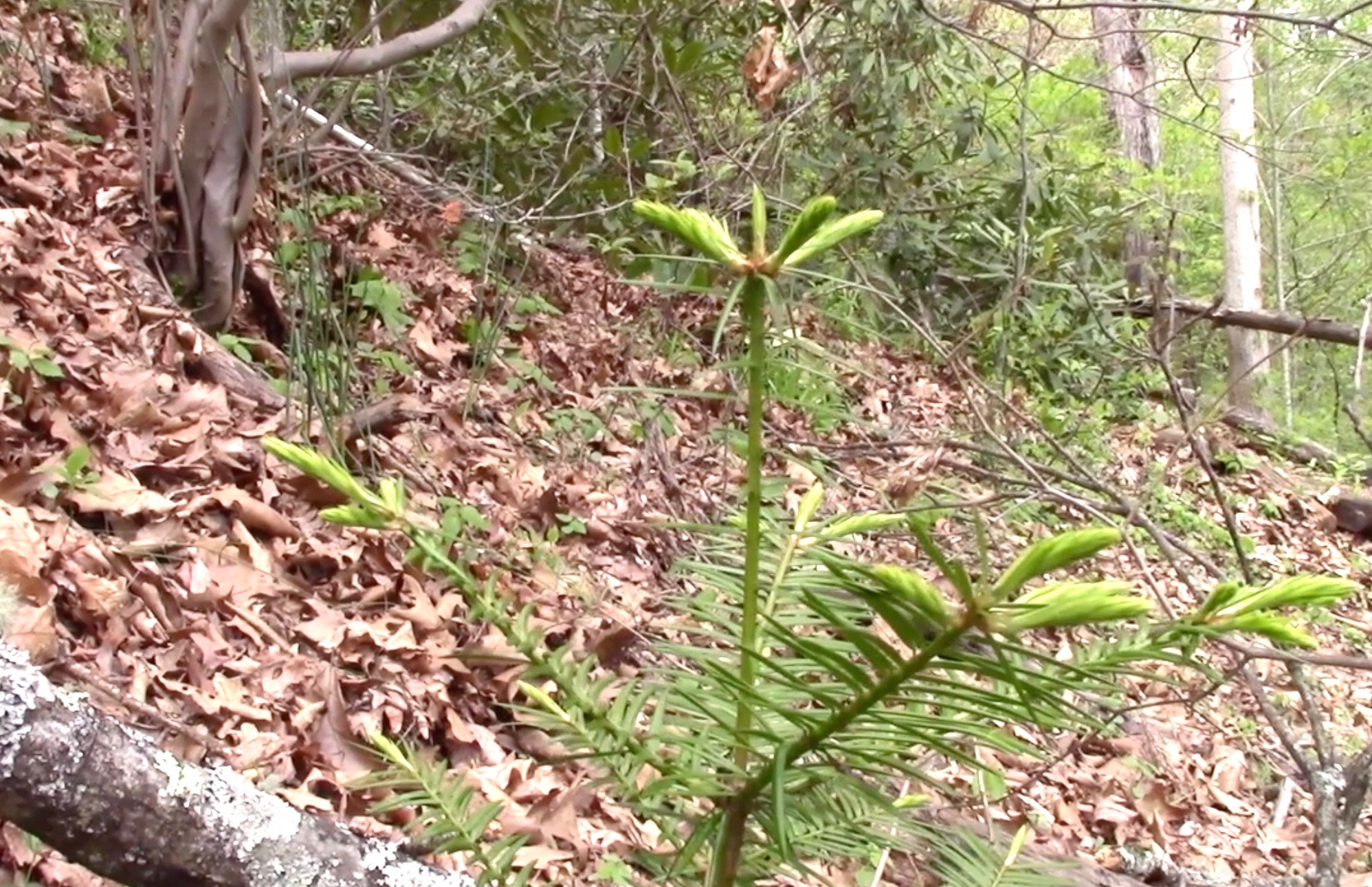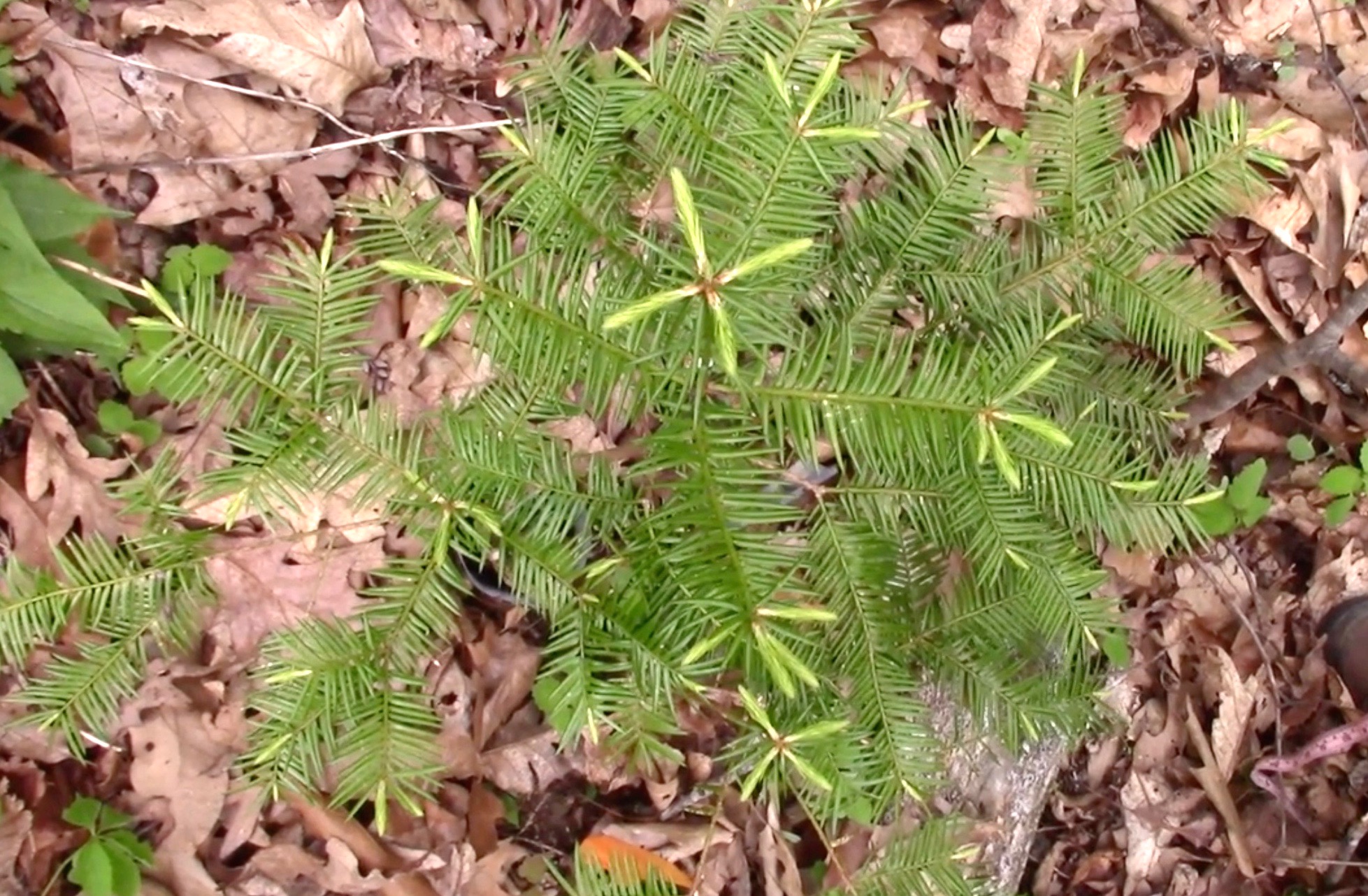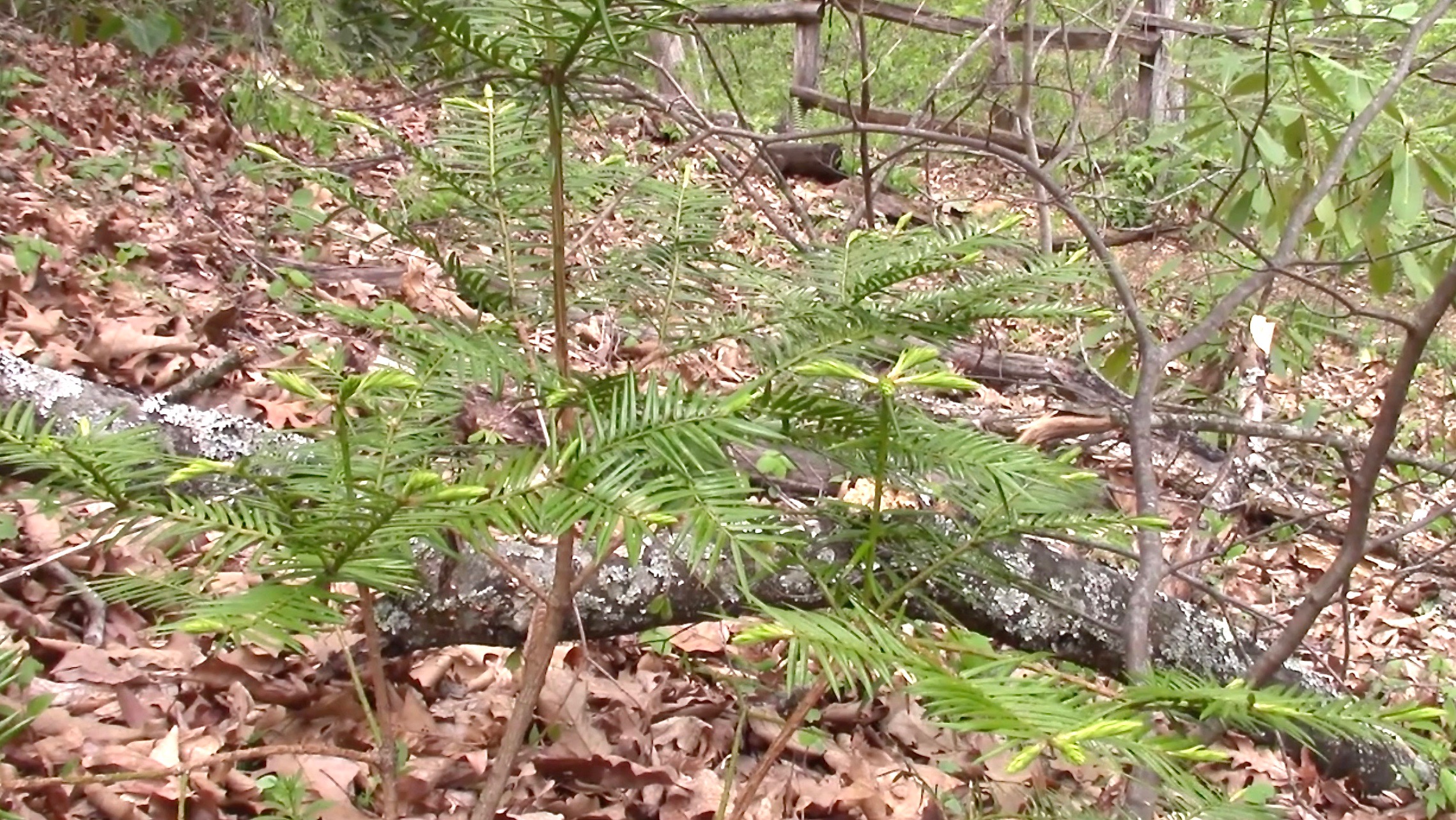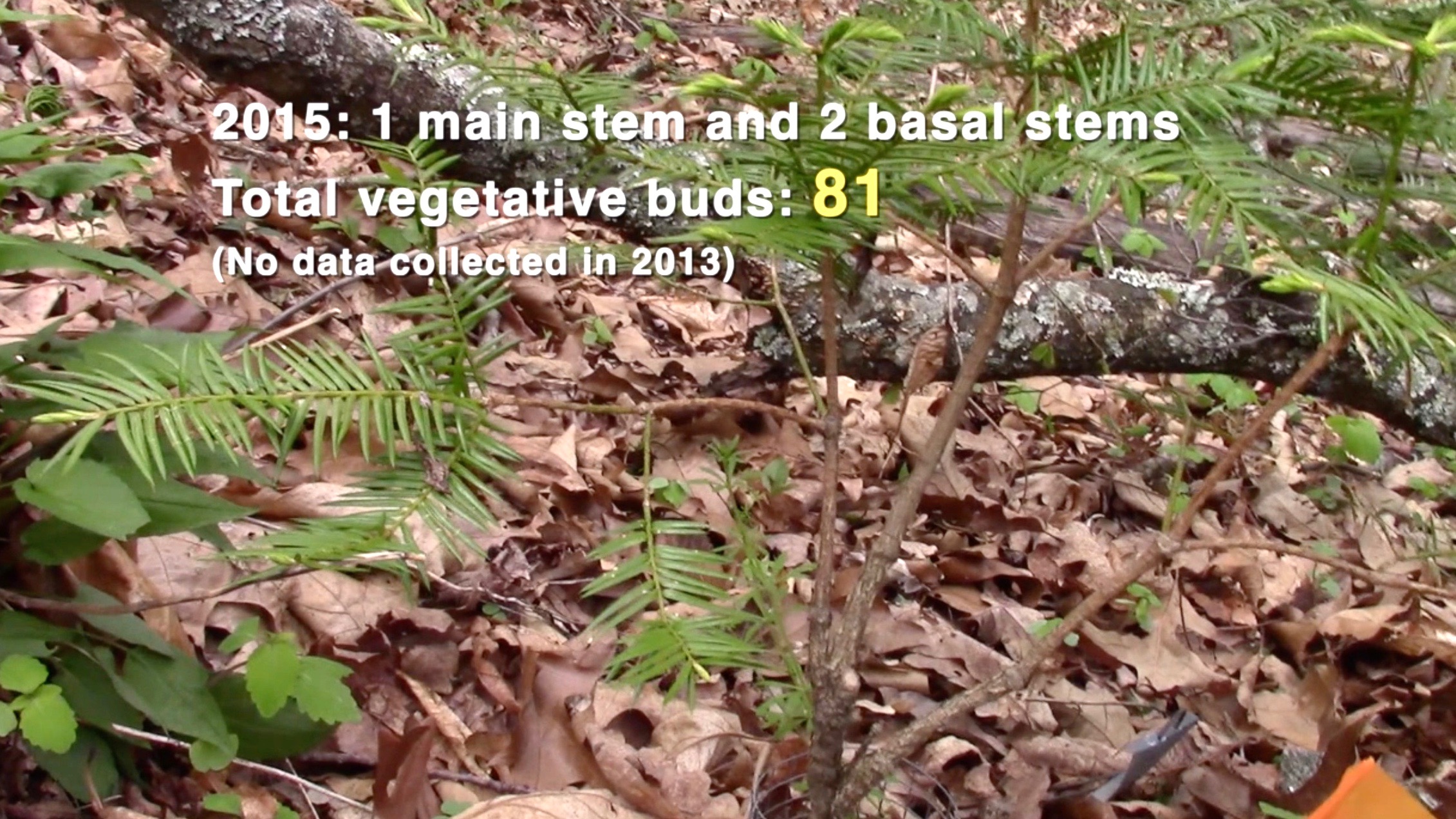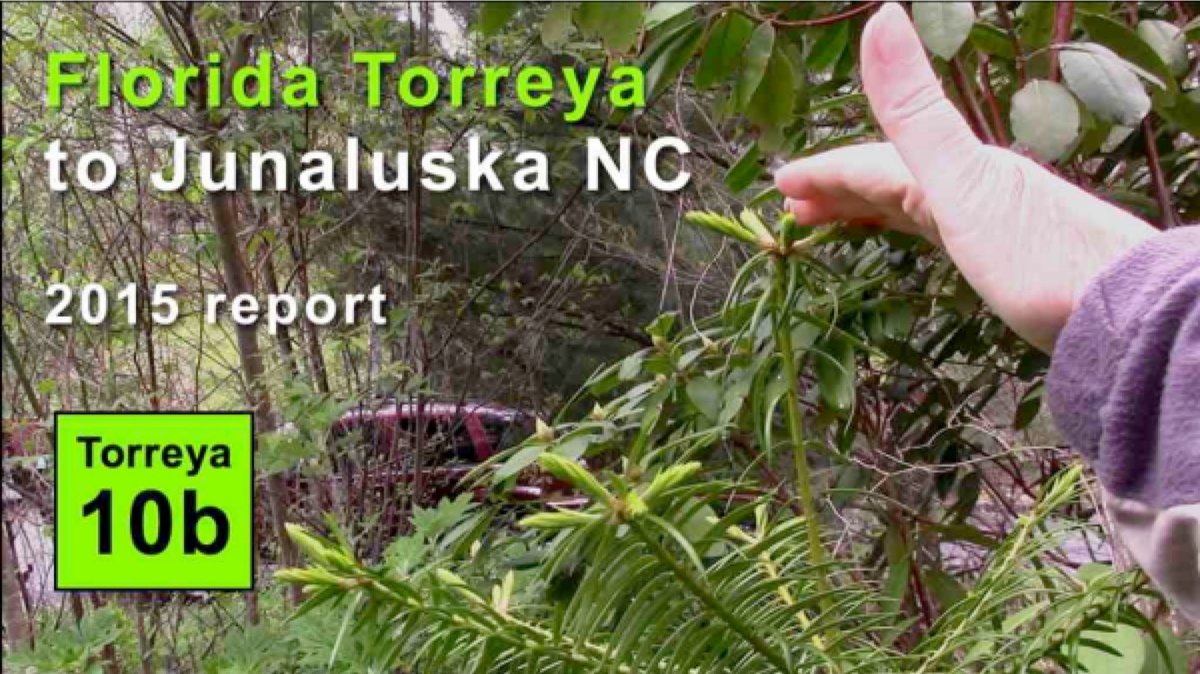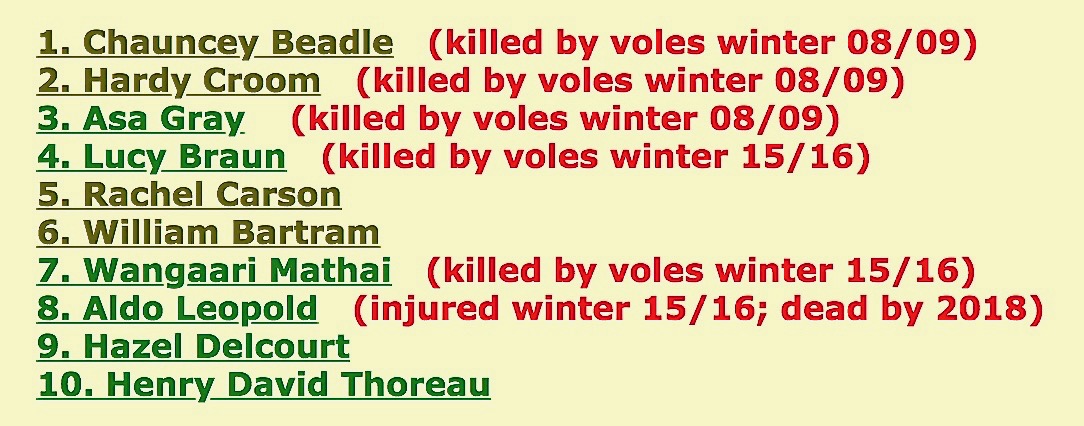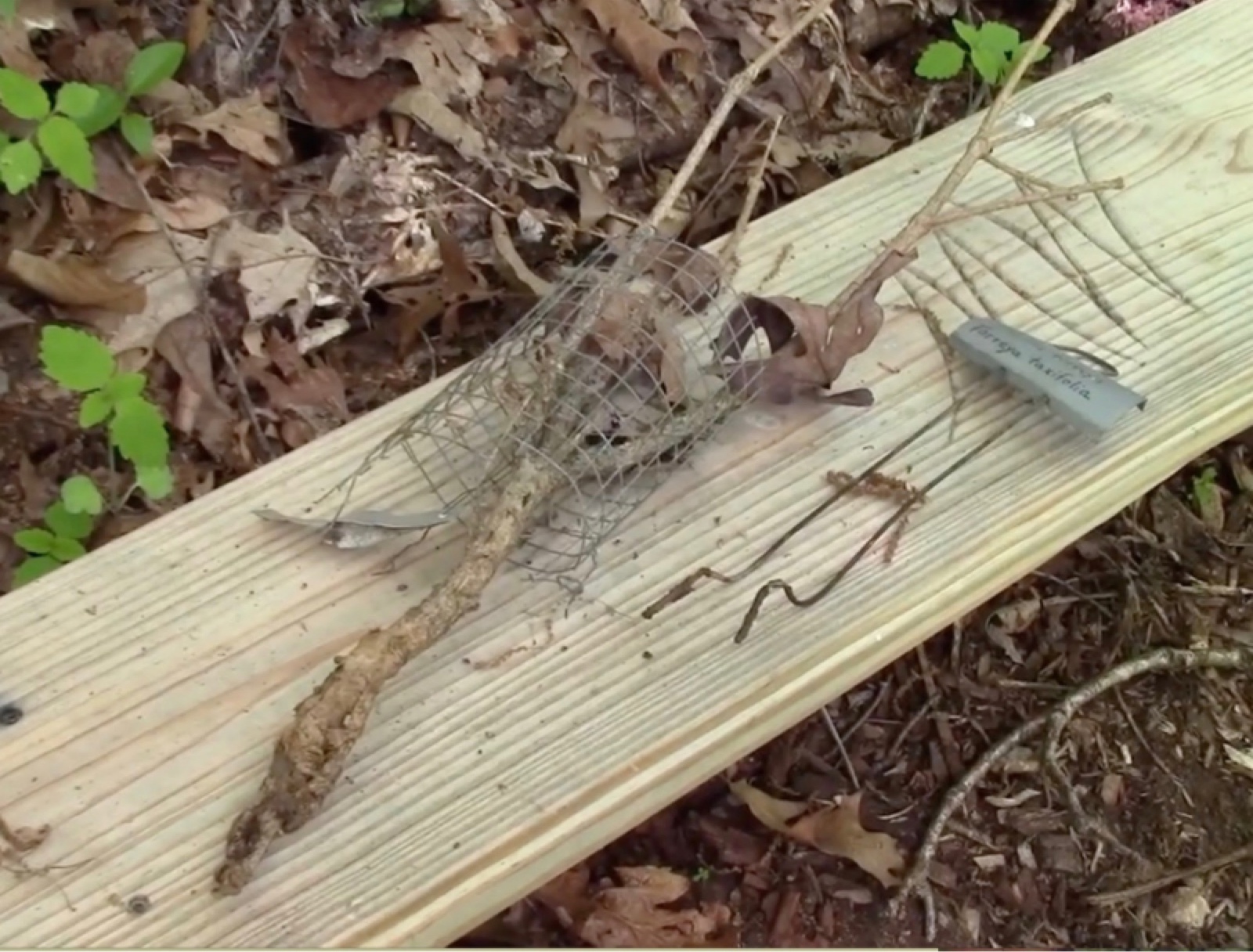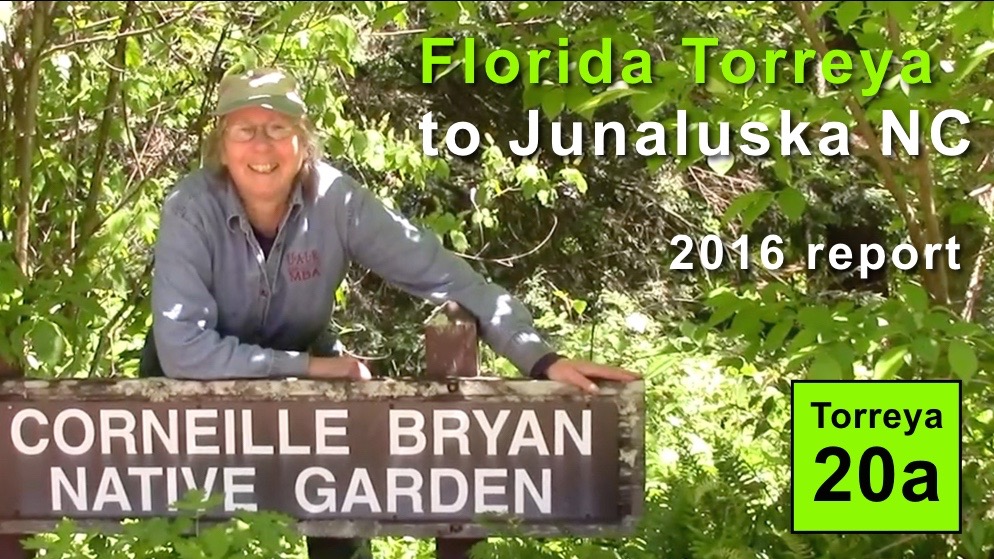Lake Junaluska, North Carolina (planted July 2008)
killed by voles Winter 2015/16
Location is NE-facing slope of a NW-to-SE ravine with perennial creek at the bottom, in Corneille Bryan Native Garden, Lake Junaluska NC (2,600 feet elevation). The uppermost canopy above this specimen may be entirely white and red oak, thus affording sun for growth mostly in early spring and late fall.
FOUR YEARS LATER
ABOVE and BELOW (May 18, 2012): Associated herbaceous plants include trillium, poison ivy, witch hazel, virginia creeper, jewelweed, Smilax, and others unidentified. New spring growth is a lighter shade of green than previous years' growth. Caged against voles at base. On a scale in which "Celia" specimen is rated by Lee Barnes as a 10, this specimen is rated an 11.
ABOVE CHART: In 2012, Lee Barnes accompanied Connie Barlow on an assessment of all of the 2008 plantings on both the Junaluska and Waynesville sites. Connie asked Lee to use his judgment in rating each of the trees. Because they visited the Waynesville site first, two trees tied there for the highest rating on a scale of 0 to 10 (Thomas Berry and Celia Hunter). When they visited Junaluska, however, the torreyas were so much more vibrant that the scale began at 10.5 and went up to 16 for Henry David Thoreau. LUCY BRAUN was rated 11.
SPRING 2013 photos below taken April 23, but spring was delayed nearly 2 weeks, so it is more like April 10. Thus, instead of light-green new growth photographed above in spring 2012, there is only light-green leaf buds to indicate the vigor of the plant. Because the canopy trees have not yet leafed out, this is an ideal time for evergreen Torreya to photosynthesize.
ABOVE LEFT (April 23, 2013): View upslope from the trail to "Lucy Braun" specimen, which is directly above the exposed rock (orange flag a little to the left of the plant).
ABOVE RIGHT (April 23, 2013): Closer view from same location as left. Notice wire cage around the main stem, to protect from vole damage of bark and root, which killed 3 specimens the first winter after the 2008 planting.
ABOVE LEFT (April 23, 2013): View looking somewhat downslope from "Lucy" (see wood fence along trail in upper left). Notice the abundant light-colored new leaf buds. Lucy appears very healthy, even though she has not gained much height since last year.
ABOVE RIGHT (April 23, 2013): Top-down view.
APRIL 25, 2015
ABOVE: Lucy Braun has very healthy top growth. In above right photo, the main stem apex is obvious, but you have to look carefully to see the radial buds of the apical growth of the 2 short basal stems (one is left of the main stem and the other is directly below it).
The LUCY BRAUN tree is found at timecode 18:37 through 21:00.
MAY 21, 2016
While filming here in 2016 Connie Barlow discovered that tunneling, root-eating rodents had killed over winter two previously very healthy torreyas: Lucy Braun and Wangari Maathai. (See list, below.) All 6 of the rodent-killed trees were closest to the SW corner home that had a hanging birdfeeder in 2016, which Connie hypothesized as the cause of a boom-and-bust rodent cycle in this seasonally occupied neighborhood.
Of the 5 remaining Torreyas planted in 2008 at the lower end of the garden, 2 were killed overwinter 2015/16 by rodents eating the tree roots (Lucy Braun and Wangari Maathai) and another is gravely injured in the same way (Aldo Leopold).
The death of LUCY and WANGARI are timecode 01:24 through 07:00. Discovery of the possible culprit, BIRDFEEDER, is 20:51 through 28:28.
MAIN PAGE OF TORREYA REWILDING PHOTOESSAY |
